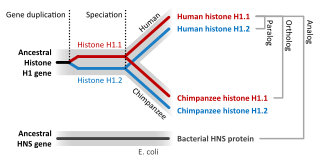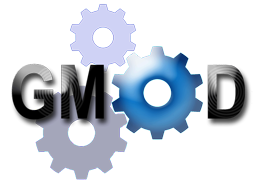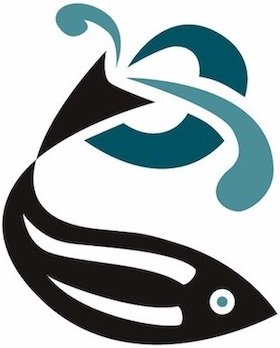Related Research Articles

Sequence homology is the biological homology between DNA, RNA, or protein sequences, defined in terms of shared ancestry in the evolutionary history of life. Two segments of DNA can have shared ancestry because of three phenomena: either a speciation event (orthologs), or a duplication event (paralogs), or else a horizontal gene transfer event (xenologs).

Ensembl genome database project is a scientific project at the European Bioinformatics Institute, which provides a centralized resource for geneticists, molecular biologists and other researchers studying the genomes of our own species and other vertebrates and model organisms. Ensembl is one of several well known genome browsers for the retrieval of genomic information.
The Rat Genome Database (RGD) is a database of rat genomics, genetics, physiology and functional data, as well as data for comparative genomics between rat, human and mouse. RGD is responsible for attaching biological information to the rat genome via structured vocabulary, or ontology, annotations assigned to genes and quantitative trait loci (QTL), and for consolidating rat strain data and making it available to the research community. They are also developing a suite of tools for mining and analyzing genomic, physiologic and functional data for the rat, and comparative data for rat, mouse, human, and five other species.

KEGG is a collection of databases dealing with genomes, biological pathways, diseases, drugs, and chemical substances. KEGG is utilized for bioinformatics research and education, including data analysis in genomics, metagenomics, metabolomics and other omics studies, modeling and simulation in systems biology, and translational research in drug development.
The Saccharomyces Genome Database (SGD) is a scientific database of the molecular biology and genetics of the yeast Saccharomyces cerevisiae, which is commonly known as baker's or budding yeast. Further information is located at the Yeastract curated repository.

The Generic Model Organism Database (GMOD) project provides biological research communities with a toolkit of open-source software components for visualizing, annotating, managing, and storing biological data. The GMOD project is funded by the United States National Institutes of Health, National Science Foundation and the USDA Agricultural Research Service.
FlyBase is an online bioinformatics database and the primary repository of genetic and molecular data for the insect family Drosophilidae. For the most extensively studied species and model organism, Drosophila melanogaster, a wide range of data are presented in different formats.
Mouse Genome Informatics (MGI) is a free, online database and bioinformatics resource hosted by The Jackson Laboratory, with funding by the National Human Genome Research Institute (NHGRI), the National Cancer Institute (NCI), and the Eunice Kennedy Shriver National Institute of Child Health and Human Development (NICHD). MGI provides access to data on the genetics, genomics and biology of the laboratory mouse to facilitate the study of human health and disease. The database integrates multiple projects, with the two largest contributions coming from the Mouse Genome Database and Mouse Gene Expression Database (GXD). As of 2018, MGI contains data curated from over 230,000 publications.

The Zebrafish Information Network is an online biological database of information about the zebrafish. The zebrafish is a widely used model organism for genetic, genomic, and developmental studies, and ZFIN provides an integrated interface for querying and displaying the large volume of data generated by this research. To facilitate use of the zebrafish as a model of human biology, ZFIN links these data to corresponding information about other model organisms and to human disease databases. Abundant links to external sequence databases and to genome browsers are included. Gene product, gene expression, and phenotype data are annotated with terms from biomedical ontologies. ZFIN is based at the University of Oregon in the United States, with funding provided by the National Institutes of Health (NIH).

MicrobesOnline is a publicly and freely accessible website that hosts multiple comparative genomic tools for comparing microbial species at the genomic, transcriptomic and functional levels. MicrobesOnline was developed by the Virtual Institute for Microbial Stress and Survival, which is based at the Lawrence Berkeley National Laboratory in Berkeley, California. The site was launched in 2005, with regular updates until 2011.
The Reference Sequence (RefSeq) database is an open access, annotated and curated collection of publicly available nucleotide sequences and their protein products. RefSeq was introduced in 2000. This database is built by National Center for Biotechnology Information (NCBI), and, unlike GenBank, provides only a single record for each natural biological molecule for major organisms ranging from viruses to bacteria to eukaryotes.
SUPERFAMILY is a database and search platform of structural and functional annotation for all proteins and genomes. It classifies amino acid sequences into known structural domains, especially into SCOP superfamilies. Domains are functional, structural, and evolutionary units that form proteins. Domains of common Ancestry are grouped into superfamilies. The domains and domain superfamilies are defined and described in SCOP. Superfamilies are groups of proteins which have structural evidence to support a common evolutionary ancestor but may not have detectable sequence homology.

In molecular biology and genetics, DNA annotation or genome annotation is the process of describing the structure and function of the components of a genome, by analyzing and interpreting them in order to extract their biological significance and understand the biological processes in which they participate. Among other things, it identifies the locations of genes and all the coding regions in a genome and determines what those genes do.
dcGO is a comprehensive ontology database for protein domains. As an ontology resource, dcGO integrates Open Biomedical Ontologies from a variety of contexts, ranging from functional information like Gene Ontology to others on enzymes and pathways, from phenotype information across major model organisms to information about human diseases and drugs. As a protein domain resource, dcGO includes annotations to both the individual domains and supra-domains.
In bioinformatics, a Gene Disease Database is a systematized collection of data, typically structured to model aspects of reality, in a way to comprehend the underlying mechanisms of complex diseases, by understanding multiple composite interactions between phenotype-genotype relationships and gene-disease mechanisms. Gene Disease Databases integrate human gene-disease associations from various expert curated databases and text mining derived associations including Mendelian, complex and environmental diseases.
PomBase is a model organism database that provides online access to the fission yeast Schizosaccharomyces pombe genome sequence and annotated features, together with a wide range of manually curated functional gene-specific data. The PomBase website was redeveloped in 2016 to provide users with a more fully integrated, better-performing service.
SoyBase is a database created by the United States Department of Agriculture. It contains genetic information about soybeans. It includes genetic maps, information about Mendelian genetics and molecular data regarding genes and sequences. It was started in 1990 and is freely available to individuals and organizations worldwide.
Judith Anne Blake is a computational biologist at the Jackson Laboratory and Professor of Mammalian Genetics.
Biocuration is the field of life sciences dedicated to organizing biomedical data, information and knowledge into structured formats, such as spreadsheets, tables and knowledge graphs. The biocuration of biomedical knowledge is made possible by the cooperative work of biocurators, software developers and bioinformaticians and is at the base of the work of biological databases.
References
- 1 2 3 Oliver SG, Lock A, Harris MA, Nurse P, Wood V (June 2016). "Model organism databases: essential resources that need the support of both funders and users". BMC Biology. 14 (1): 49. doi: 10.1186/s12915-016-0276-z . PMC 4918006 . PMID 27334346.
- ↑ Bond M, Holthaus SM, Tammen I, Tear G, Russell C (November 2013). "Use of model organisms for the study of neuronal ceroid lipofuscinosis". Biochimica et Biophysica Acta (BBA) - Molecular Basis of Disease. 1832 (11): 1842–65. doi: 10.1016/j.bbadis.2013.01.009 . PMID 23338040.
- ↑ Ashburner M, Ball CA, Blake JA, Botstein D, Butler H, Cherry JM, et al. (May 2000). "Gene ontology: tool for the unification of biology. The Gene Ontology Consortium". Nature Genetics. 25 (1): 25–9. doi:10.1038/75556. PMC 3037419 . PMID 10802651.
- ↑ Gene Ontology Consortium (January 2015). "Gene Ontology Consortium: going forward". Nucleic Acids Research. 43 (Database issue): D1049-56. doi:10.1093/nar/gku1179. PMC 4383973 . PMID 25428369.
- ↑ O'Connor BD, Day A, Cain S, Arnaiz O, Sperling L, Stein LD (2008). "GMODWeb: a web framework for the Generic Model Organism Database". Genome Biology. 9 (6): R102. doi: 10.1186/gb-2008-9-6-r102 . PMC 2481422 . PMID 18570664.
- ↑ Cherry JM, Hong EL, Amundsen C, Balakrishnan R, Binkley G, Chan ET, et al. (January 2012). "Saccharomyces Genome Database: the genomics resource of budding yeast". Nucleic Acids Research. 40 (Database issue): D700-5. doi:10.1093/nar/gkr1029. PMC 3245034 . PMID 22110037.
- ↑ Rutherford KM, Lera-Ramírez M, Wood V (May 2024). "PomBase: a Global Core Biodata Resource—growth, collaboration, and sustainability". Genetics. 227 (1). doi:10.1093/genetics/iyae007. PMC 11075564 . PMID 38376816.
- ↑ Wood V, Harris MA, McDowall MD, Rutherford K, Vaughan BW, Staines DM, et al. (January 2012). "PomBase: a comprehensive online resource for fission yeast". Nucleic Acids Research. 40 (Database issue): D695-9. doi:10.1093/nar/gkr853. PMC 3245111 . PMID 22039153.
- ↑ Lock A, Rutherford K, Harris MA, Wood V (2018). "PomBase: The Scientific Resource for Fission Yeast". Eukaryotic Genomic Databases. Methods in Molecular Biology. Vol. 1757. pp. 49–68. doi:10.1007/978-1-4939-7737-6_4. ISBN 978-1-4939-7736-9. PMC 6440643 . PMID 29761456.
- ↑ Karimi K, Fortriede JD, Lotay VS, Burns KA, Wang DZ, Fisher ME, et al. (January 2018). "Xenbase: a genomic, epigenomic and transcriptomic model organism database". Nucleic Acids Research. 46 (D1): D861 –D868. doi:10.1093/nar/gkx936. PMC 5753396 . PMID 29059324.
- ↑ James-Zorn C, Ponferrada VG, Fisher ME, Burns KA, Fortriede JD, Segerdell E, Karimi K, Lotay VS, Wang DZ, Chu S, Pells TJ, Wang Y, Vize PD, Zorn AM (May 2018). "Navigating Xenbase: An Integrated Xenopus Genomics and Gene Expression Database". Eukaryotic Genomic Databases. Methods in Molecular Biology. Vol. 1757. pp. 251–305. doi:10.1007/978-1-4939-7737-6_10. ISBN 978-1-4939-7736-9. PMC 6853059 . PMID 29761462.
{{cite book}}:|journal=ignored (help) - ↑ Telmer, Cheryl A.; Karimi, Kamran; Chess, Macie M.; Agalakov, Sergei; Arshinoff, Bradley I.; Lotay, Vaneet; Wang, Dong Zhuo; Chu, Stanley; Pells, Troy J.; Vize, Peter D.; Hinman, Veronica F.; Ettensohn, Charles A. (2024). "Echinobase: A resource to support the echinoderm research community". Genetics. 227. doi:10.1093/genetics/iyae002. PMC 11075573 .
- ↑ Attrill H, Falls K, Goodman JL, Millburn GH, Antonazzo G, Rey AJ, Marygold SJ (January 2016). "FlyBase: establishing a Gene Group resource for Drosophila melanogaster". Nucleic Acids Research. 44 (D1): D786-92. doi:10.1093/nar/gkv1046. PMC 4702782 . PMID 26467478.
- ↑ Elsik CG, Tayal A, Unni DR, Burns GW, Hagen DE (2018). "Hymenoptera Genome Database: Using HymenopteraMine to Enhance Genomic Studies of Hymenopteran Insects". In Kollmar M (ed.). Eukaryotic Genomic Databases. Methods in Molecular Biology. Vol. 1757. New York, NY: Springer New York. pp. 513–556. doi:10.1007/978-1-4939-7737-6_17. ISBN 978-1-4939-7736-9. PMID 29761469.
- ↑ Eppig JT, Blake JA, Bult CJ, Kadin JA, Richardson JE (January 2015). "The Mouse Genome Database (MGD): facilitating mouse as a model for human biology and disease". Nucleic Acids Research. 43 (Database issue): D726-36. doi:10.1093/nar/gku967. PMC 4384027 . PMID 25348401.
- ↑ Harris TW, Baran J, Bieri T, Cabunoc A, Chan J, Chen WJ, et al. (January 2014). "WormBase 2014: new views of curated biology". Nucleic Acids Research. 42 (Database issue): D789-93. doi:10.1093/nar/gkt1063. PMC 3965043 . PMID 24194605.
- ↑ Shimoyama M, De Pons J, Hayman GT, Laulederkind SJ, Liu W, Nigam R, et al. (January 2015). "The Rat Genome Database 2015: genomic, phenotypic and environmental variations and disease". Nucleic Acids Research. 43 (Database issue): D743-50. doi:10.1093/nar/gku1026. PMC 4383884 . PMID 25355511.
- ↑ Kreppel L, Fey P, Gaudet P, Just E, Kibbe WA, Chisholm RL, Kimmel AR (January 2004). "dictyBase: a new Dictyostelium discoideum genome database". Nucleic Acids Research. 32 (Database issue): D332-3. doi:10.1093/nar/gkh138. PMC 308872 . PMID 14681427.
- ↑ Lamesch P, Berardini TZ, Li D, Swarbreck D, Wilks C, Sasidharan R, et al. (January 2012). "The Arabidopsis Information Resource (TAIR): improved gene annotation and new tools". Nucleic Acids Research. 40 (Database issue): D1202-10. doi:10.1093/nar/gkr1090. PMC 3245047 . PMID 22140109.
- ↑ Lawrence CJ, Dong Q, Polacco ML, Seigfried TE, Brendel V (January 2004). "MaizeGDB, the community database for maize genetics and genomics". Nucleic Acids Research. 32 (Database issue): D393-7. doi:10.1093/nar/gkh011. PMC 308746 . PMID 14681441.
- ↑ Andorf CM, Cannon EK, Portwood JL, Gardiner JM, Harper LC, Schaeffer ML, et al. (January 2016). "MaizeGDB update: new tools, data and interface for the maize model organism database". Nucleic Acids Research. 44 (D1): D1195-201. doi:10.1093/nar/gkv1007. PMC 4702771 . PMID 26432828.
- ↑ Grant D, Nelson RT, Cannon SB, Shoemaker RC (January 2010). "SoyBase, the USDA-ARS soybean genetics and genomics database". Nucleic Acids Research. 38 (Database issue): D843-6. doi:10.1093/nar/gkp798. PMC 2808871 . PMID 20008513.
- ↑ Howe DG, Bradford YM, Conlin T, Eagle AE, Fashena D, Frazer K, et al. (January 2013). "ZFIN, the Zebrafish Model Organism Database: increased support for mutants and transgenics". Nucleic Acids Research. 41 (Database issue): D854-60. doi:10.1093/nar/gks938. PMC 3531097 . PMID 23074187.
- ↑ Inglis DO, Arnaud MB, Binkley J, Shah P, Skrzypek MS, Wymore F, et al. (January 2012). "The Candida genome database incorporates multiple Candida species: multispecies search and analysis tools with curated gene and protein information for Candida albicans and Candida glabrata". Nucleic Acids Research. 40 (Database issue): D667-74. doi:10.1093/nar/gkr945. PMC 3245171 . PMID 22064862.
- ↑ Keseler IM, Mackie A, Peralta-Gil M, Santos-Zavaleta A, Gama-Castro S, Bonavides-Martínez C, et al. (January 2013). "EcoCyc: fusing model organism databases with systems biology". Nucleic Acids Research. 41 (Database issue): D605-12. doi:10.1093/nar/gks1027. PMC 3531154 . PMID 23143106.
- ↑ Zhu B, Stülke J (January 2018). "SubtiWiki in 2018: from genes and proteins to functional network annotation of the model organism Bacillus subtilis". Nucleic Acids Research. 46 (D1): D743 –D748. doi:10.1093/nar/gkx908. PMC 5753275 . PMID 29788229.